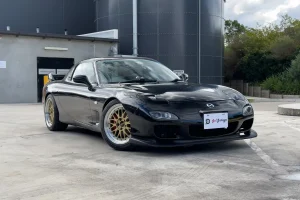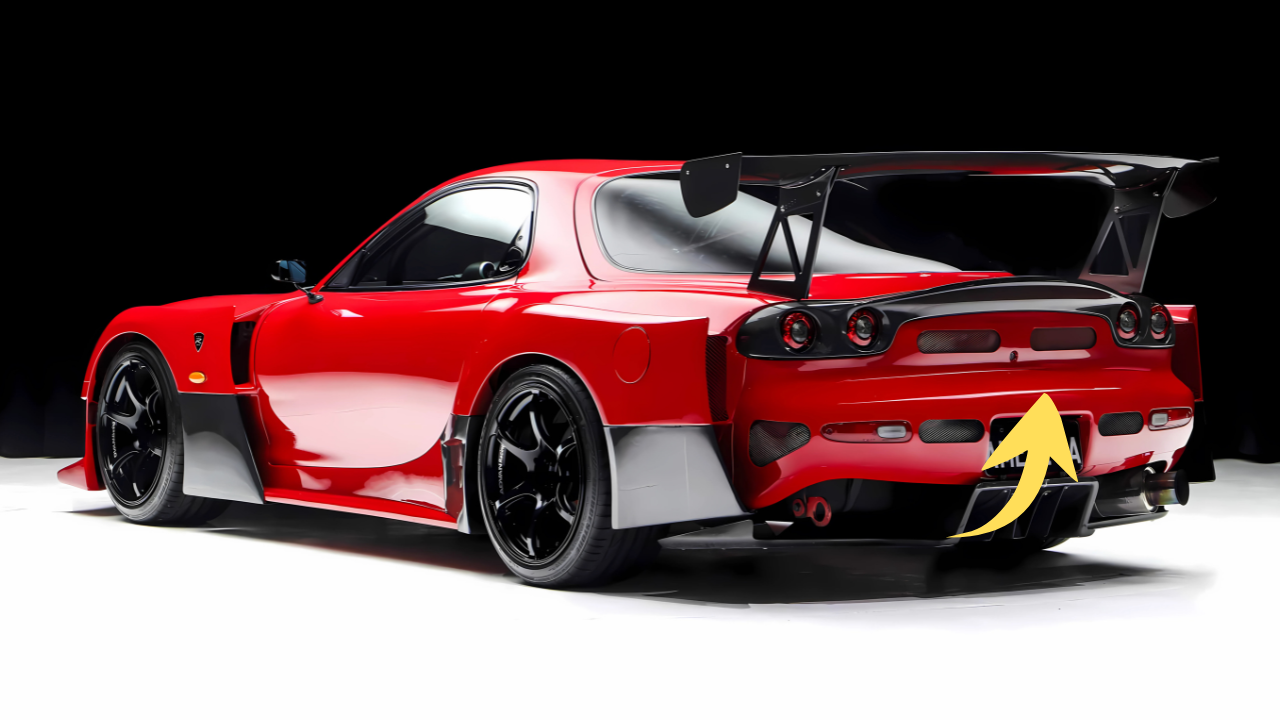The Mazda RX-7, a legend in the automotive world, is poised to make a comeback, but it’s not the pure rotary-powered sports car that enthusiasts might expect. Unveiled as the Iconic SP concept at the 2023 Japan Mobility Show, the modern successor to the RX-7 merges Mazda’s iconic rotary engine with hybrid technology, signaling a bold evolution for the brand’s performance heritage. With a potential production launch as early as 2026, this revival has sparked excitement and debate among fans. This article explores the RX-7’s storied past, the innovative design and powertrain of its successor, its place in Mazda’s lineup, and what this means for the future of rotary-powered sports cars.
The Legacy of the Mazda RX-7
The Mazda RX-7, produced from 1978 to 2002, is a cornerstone of Japanese automotive culture. Known for its lightweight design, razor-sharp handling, and unique Wankel rotary engine, the RX-7 carved a niche as one of the most engaging sports cars of its era. Across three generations (SA/FB, FC, and FD), it became a JDM icon, celebrated for its sleek styling and performance pedigree. The FD-generation RX-7 (1992–2002), with its twin-turbo 13B-REW rotary engine, remains a favorite among enthusiasts, fetching high prices at auctions today.
Mazda’s rotary engine, a pistonless design using a triangular rotor, offered high-revving power in a compact package but faced challenges with fuel economy and emissions. The RX-7’s discontinuation in 2002, followed by the RX-8’s exit in 2012, left a void in Mazda’s performance lineup. For years, rumors of a rotary revival persisted, fueled by Mazda’s commitment to the technology. The Iconic SP concept, first shown in 2023, is the strongest indication yet that the RX-7’s spirit will live on, albeit in a modernized form.
The Iconic SP: A Modern RX-7 Successor
The Mazda Iconic SP, described by Chief Technical Officer Ryuichi Umeshita as “a good successor for RX-7,” is a sleek, blood-red coupe that blends retro-inspired design with cutting-edge technology. Measuring 4,180mm long, 105mm shorter than the FD RX-7 but 265mm longer than the current MX-5 Miata, it slots neatly between Mazda’s past and present sports cars. Its low, wide stance and pop-up headlights evoke the FD’s aesthetic, while its smooth curves align with Mazda’s Kodo design philosophy.
The Iconic SP’s powertrain is where things diverge from tradition. Unlike the RX-7’s pure rotary setup, it features a dual-rotor rotary engine as a range-extender for a hybrid system, paired with an electric motor to deliver 365 horsepower to the rear wheels. Mazda is also exploring a variant where the rotary engine directly drives the wheels, appealing to purists who crave the high-revving character of the original RX-7. The new rotary, an evolution of the 8C engine used in the MX-30 E-Skyactiv R-EV, is designed to meet stringent U.S. emissions standards, addressing a key barrier that limited the MX-30’s availability.
Mazda’s Chief Financial Officer, Jeff Guyton, noted that the new engine can combust hydrogen and other fuels, enhancing its versatility in a carbon-neutral future. This hybrid approach balances performance with environmental responsibility, aligning with global trends toward electrification while preserving the rotary’s unique character.
Why a Hybrid RX-7?
The decision to reintroduce the RX-7 as a hybrid reflects Mazda’s pragmatic response to modern challenges. Rotary engines, while compact and powerful, have historically struggled with fuel efficiency and emissions compliance. The Iconic SP’s range-extender hybrid system mitigates these issues, using the rotary engine as a generator to charge a battery that powers an electric motor. This setup delivers instant torque, smooth power delivery, and better efficiency than traditional rotaries, while retaining the high-revving sound that defined the RX-7.
For purists, the hybrid setup may feel like a departure from the RX-7’s raw, analog driving experience. However, Mazda’s consideration of a rotary-driven variant suggests an effort to appease traditionalists. The Iconic SP’s 365 horsepower surpasses the FD RX-7’s 276bhp (in its final Japanese spec), offering performance competitive with rivals like the Toyota GR Supra and Nissan Z. Its lightweight design, targeting a low center of gravity, ensures the agile handling that made the RX-7 a legend.
Mazda’s Sports Car Strategy
The Iconic SP won’t replace the MX-5 Miata, Mazda’s beloved roadster. Instead, it will coexist as a larger, more powerful model, reviving the dynamic where the RX-7 and MX-5 shared showrooms in the 1990s. Mazda’s design chief, Masashi Nakayama, confirmed that the next-generation MX-5, due in a few years, will retain its compact size but draw styling cues from the Iconic SP. This dual-sports-car strategy underscores Mazda’s commitment to “fun-to-drive” vehicles, even as it expands its SUV lineup with models like the CX-60 and EZ-60.

The RX-7 successor’s production hinges on a viable business case, with a potential launch in 2026 or 2027. Economic challenges, including tariffs and market demand, could delay its arrival, particularly in the U.S. However, Mazda’s enthusiasm, backed by President and CEO Masahiro Moro, suggests strong internal support for the project. The Iconic SP’s global tour, from Tokyo to the 2025 Bangkok International Motor Show, has generated significant buzz, indicating robust consumer interest.
Challenges and Expectations
Bringing back the RX-7 name—or a new moniker like RX-9—carries risks. The FD RX-7’s cult status sets a high bar, and fans may scrutinize any deviation from its formula. The hybrid powertrain, while innovative, could alienate purists who associate the RX-7 with unadulterated rotary power. Additionally, pricing remains a concern. The FD RX-7 was relatively affordable, but modern sports cars like the GR Supra start around AUD$80,000. The Iconic SP, with its advanced hybrid tech, may command a premium, potentially limiting its market.
On the performance front, the Iconic SP promises to deliver. Its 365 horsepower and rear-wheel-drive layout position it as a credible rival to the Supra (382hp) and Nissan Z (400hp). The rotary’s compact size allows for a low hood line and optimal weight distribution, enhancing agility. If Mazda offers a manual transmission option alongside the hybrid’s automatic, it could recapture the driver-focused spirit of the original RX-7.
The Broader Context: Mazda’s Rotary Heritage
Mazda’s commitment to rotary engines spans over five decades, from the 1967 Cosmo Sport to the RX-8. The company’s persistence with this unconventional technology, despite its challenges, reflects its innovative spirit. The 1991 Le Mans victory with the rotary-powered 787B remains a high point, proving the engine’s potential in high-performance applications. The Iconic SP builds on this legacy, adapting the rotary for a sustainable future while honoring its performance roots.
Social media buzz, particularly on X, reflects the excitement. Posts from outlets like Carscoops and Motor1 highlight the Iconic SP’s potential as an RX-7 successor, with fans eagerly awaiting confirmation of the RX-7 or RX-9 badge. However, some express skepticism, citing Mazda’s history of unfulfilled rotary promises.
Mazda Sports Car Comparison
|
Model |
Powertrain |
Power |
Transmission |
Launch Year |
Key Features |
|---|---|---|---|---|---|
|
Iconic SP (RX-7 Successor) |
Rotary range-extender hybrid |
365hp |
Auto (TBC) |
2026 (est.) |
Pop-up headlights, 4,180mm length |
|
FD RX-7 (1992–2002) |
Twin-turbo 13B-REW rotary |
276hp |
Manual/Auto |
1992 |
Lightweight, iconic design |
|
MX-5 Miata (2025) |
Internal combustion (TBC) |
~180hp |
Manual/Auto |
TBC |
Compact, affordable, classic roadster |
|
RX-8 (2003–2012) |
13B-MSP Renesis rotary |
232hp |
Manual/Auto |
2003 |
Four-seat coupe, last rotary model |
Looking Forward
The Mazda RX-7’s return as the Iconic SP marks a new chapter for Mazda’s performance legacy. By blending a rotary range-extender with electric power, Mazda balances tradition with innovation, addressing emissions challenges while delivering the performance fans expect. Positioned alongside the MX-5, the Iconic SP could revive Mazda’s sports car glory days, provided it navigates economic hurdles and meets enthusiast expectations. While it’s not the RX-7 of old, its sleek design, potent hybrid powertrain, and rotary soul make it a worthy successor, poised to reignite the passion of rotary fans worldwide.
